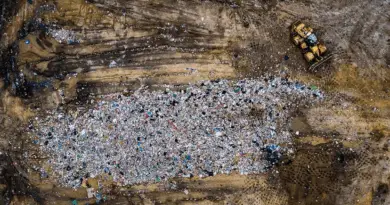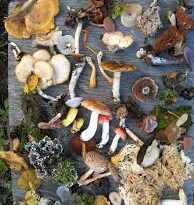Concept and Definition of Pollution
Pollution threatens the fundamental life support system of our dear earth (water, Air, and soil). This development underscores the significance of pollution control in Environmental Health.
Concept of Pollution
Often things or items or media (water, food, soil, and air) are found in their natural, pure and pristine forms as expected in both quality and quantity. When an undesirable substance which normally is not an aspect of that original item/media is found in such a noticeable concentration as to affect the value of such item/media, pollution has taken place.
The phenomena of pollution occur in our environment every day as a result of our daily endeavors/activities either deliberately or by share coincidence.
Pollution also occurs through natural events such as bush fires, wind storms, climate change, etc.
At a micro level, we pollute the water we reserved for drinking even at home by pouring some ink or paint or saw dust into the reservoir thereby making it noticeably changed or polluted and unattractive for drinking. At a larger level, a stream can be polluted by emptying large human excreta into it.
Definitions of Pollution
Pollution is the introduction of contaminants into the natural environment that causes adverse change.
The Wikipedia encyclopedia defines Pollution as ‘defiling or making impure, especially contamination by noxious substances ‘‘another definition given is ‘contamination of the environment as a result of human activities‘‘.
The free dictionary by Farlex, also defined pollution as ‘the presence of substances and conditions that adversely affect the health and well-being of people within a community‘‘.
Pollution is ‘the act or process of polluting or the state of being polluted, especially the contamination of soil, water, or the atmosphere by the discharge of harmful substances. (The free dictionary by Farlex).
In all the above shades of definitions the common denominator is that in any act of pollution, something else not being an original component of the item has been introduced to cause a significant departure from its natural acceptable form.
Technically speaking, therefore, for pollution to have taken place the pollutants (contaminants) must be in such a quantity or volume to cause adverse change (color, odor, organic content, temperature, taste, etc.) to the environmental item.
It also holds therefore that the mere drop of ink in a dam of water may not necessarily translate to pollution or a presence of 0.001 counts of E.coli in a litre of water making its polluted water. Most authorities have set standards for which pollution would have taken place, especially for water and ambient air regulatory authorities.
In Nigeria for instance, there is a national water quality standard and the state water supply authorities also have state water quality standards as test cases for water pollution or acceptable water quality.
Read Also: Noise Pollution: Concept, Sources, Effects, and Control Measures
Forms of Pollution

By convention pollution or environmental pollution is described in accordance with the forms they present. The major forms are as follows:
1. Air pollution
The release of chemicals and particulates into the atmosphere. Common gaseous pollutants include carbon monoxide, sulphur dioxide, chlorofluorocarbons (CFCs), and nitrogen oxides produced by industry and motor vehicles.
Photochemical ozone and smog are created as nitrogen oxides and hydrocarbons react to sunlight.
2. Light pollution
Includes light trespass, over-illumination and astronomical interference.
3. Littering
The criminal throwing of inappropriate man-made objects, unto public and private properties.
4. Noise pollution
Which encompass road-way noise, aircraft noise, industrial noise, as well as high-intensive sonar.
5. Soil contamination
Occurs when chemicals are released by spills or underground leakages. Among the most significant soil contaminants are hydrocarbons, heavy metals, herbicides, pesticides, and chlorinated hydrocarbons.
6. Radioactive contamination
Resulting from 20th-century activities in atomic physics, such as nuclear power generation and nuclear weapons research, manufacture, and deployment.
Thermal Pollution is a temperature change in natural water bodies caused by human influence, such as the use of water as coolant in a power plant.
Visual pollution, can refer to the presence of overhead power lines, motors way, billboards, scarred landforms, (as from strip mining), open storage of trash, municipal solid waste, or space debris.
7. Water pollution
By the discharge of wastewater from commercial and industrial waste into surface waters, discharges of untreated domestic sewage, and chemical contaminants, such as chlorine, from treated sewage; release of wastes and contaminants into surface runoffs flowing to surface waters (including urban runoff and agricultural which may contain chemical fertilizers and pesticides) waste disposal and leaching into the ground.
Indoor Air Pollution
Indoor air pollution is the presence of pollutants in the air in dwelling places. We are exposed to chemicals and particulates in the air we breathe, and the air we breathe is mostly inside the building where we spend almost all of our time.
For example, combustion that takes place inside homes and other buildings through cooking and heating often produces elevated levels of carbon monoxide, nitrogen oxides, hydrocarbon, and repairable particulates.
According to Masters (2005), cigarette smoke emits carbon monoxide, benzene, acrolein, other aldehydes, and particulate, as well as about 4000 other chemicals. Some photocopying machines emit ozone. Building materials such as particle board, and plywood, emit urea formaldehyde.
Chipped and peeling paint containing lead becomes air-borne toxic dust. A great number of volatile organic compounds are emitted from household cleaning products, paints, carpeting, and a variety of other chemicals we use in our homes.
Many pollutants, such as cigarette smoke and radon gas, if they are emitted outdoor, have plenty of dilution air. So people tend not to be exposed to hazardous levels of contamination.
Read Also: Effects of Pollution on Fish, Algae, Zooplankton, Benthic Organisms, and Water Quality
However, these pollutants can be concentrated especially indoors leading to harmful exposure levels. Sources of Indoor air pollutants include the following:
| S/N | POLLUTANT | SOURCES |
| 1. | Asbestos and other fibrous aerosols | Friable asbestos, vinyl floor, and Cement products. |
| 2. | Carbon monoxide | Kerosene and gas space heaters, Gas stoves, wood stoves, fireplaces, and smoking. |
| 3. | Formaldehyde | Particle board, paneling, plywood carpets, ceiling tile, urea formaldehyde form insulation, and other construction material. |
| 4. | Inhalation particulate matter | Smoking, vacuuming, wood stoves, fireplaces. |
| 5. | Nitrogen dioxide | Kerosene and gas space heaters, gas stoves. |
| 6. | Ozone | Photocopying machines. |
| 7. | Radon and Radon progeny | Diffusion from soil, ground-water, building materials |
| 8. | Insecticides | Aerosol sprays. |
| 9. | Tobacco | Cigarettes. |
| 10. | Bacteria, viruses, pollens | Pets, Plants, Humans. |
In summary, pollution and its control is a very important aspect of Environmental Health practice. We have been able to properly define pollution and explain it where it occurs and differentiate the various forms of pollution as they happen. Next unit we are going to consider the different types of pollutants and their classification.
We defined pollution and appreciated the fact that when we talk about pollution, we mean that something not naturally an aspect of a medium and perhaps with potential danger to the health of man has come into a media (water, air, soil, etc), which, has defiled its quality. There are also different types of pollution such as air, water, and soil pollution.



